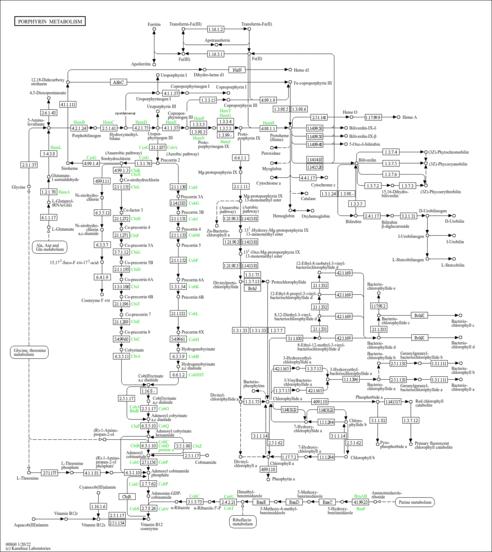| Record Information |
|---|
| Version | 1.0 |
|---|
| Created at | 2020-04-17 18:49:12 UTC |
|---|
| Updated at | 2020-12-07 19:11:14 UTC |
|---|
| CannabisDB ID | CDB004907 |
|---|
| Secondary Accession Numbers | Not Available |
|---|
| Cannabis Compound Identification |
|---|
| Common Name | Carbon monoxide |
|---|
| Description | Carbon monoxide, also known as [CO] or C#O, belongs to the class of inorganic compounds known as homogeneous other non-metal compounds. These are inorganic non-metallic compounds in which the largest atom belongs to the class of 'other non-metals'. Carbon monoxide is a drug which is used as a marker of respiratory status in spirometry tests [l2557], [f4].
food additive for pigment fixation in meat [l2531]. Carbon monoxide is possibly neutral. Carbon monoxide exists in all living species, ranging from bacteria to humans. In humans, carbon monoxide is involved in the metabolic disorder called congenital erythropoietic porphyria (cep) or gunther disease pathway. Outside of the human body, Carbon monoxide has been detected, but not quantified in, several different foods, such as garland chrysanthemums, alfalfa, japanese walnuts, lemon grass, and chinese chives. This could make carbon monoxide a potential biomarker for the consumption of these foods. Carbon monoxide is a potentially toxic compound. Carbon monoxide is expected to be in Cannabis as all living plants are known to produce and metabolize it. |
|---|
| Structure | |
|---|
| Synonyms | | Value | Source |
|---|
| [CO] | ChEBI | | C#O | ChEBI | | CO | ChEBI | | Monoxide, carbon | HMDB |
|
|---|
| Chemical Formula | CO |
|---|
| Average Molecular Weight | 28.01 |
|---|
| Monoisotopic Molecular Weight | 27.9949 |
|---|
| IUPAC Name | Not Available |
|---|
| Traditional Name | Not Available |
|---|
| CAS Registry Number | 630-08-0 |
|---|
| SMILES | [C-]#[O+] |
|---|
| InChI Identifier | InChI=1S/CO/c1-2 |
|---|
| InChI Key | UGFAIRIUMAVXCW-UHFFFAOYSA-N |
|---|
| Chemical Taxonomy |
|---|
| Description | Belongs to the class of inorganic compounds known as homogeneous other non-metal compounds. These are inorganic non-metallic compounds in which the largest atom belongs to the class of 'other non-metals'. |
|---|
| Kingdom | Inorganic compounds |
|---|
| Super Class | Homogeneous non-metal compounds |
|---|
| Class | Homogeneous other non-metal compounds |
|---|
| Sub Class | Not Available |
|---|
| Direct Parent | Homogeneous other non-metal compounds |
|---|
| Alternative Parents | Not Available |
|---|
| Substituents | - Homogeneous other non metal
|
|---|
| Molecular Framework | Not Available |
|---|
| External Descriptors | |
|---|
| Ontology |
|---|
|
| Physiological effect | Health effect: |
|---|
| Disposition | Route of exposure: Source: Biological location: |
|---|
| Role | Indirect biological role: Biological role: Industrial application: |
|---|
| Physical Properties |
|---|
| State | Liquid |
|---|
| Experimental Properties | | Property | Value | Reference |
|---|
| Melting Point | -56.5 °C | Not Available | | Boiling Point | Not Available | Not Available | | Water Solubility | 1.48 mg/mL at 25 °C | Not Available | | logP | 0.83 | HANSCH,C ET AL. (1995) |
|
|---|
| Predicted Properties | [] |
|---|
| Spectra |
|---|
| EI-MS/GC-MS | | Type | Description | Splash Key | View |
|---|
| EI-MS | Mass Spectrum (Electron Ionization) | splash10-004i-9000000000-dfbb2bd73fc3d527a340 | 2014-09-20 | View Spectrum |
|
|---|
| MS/MS | | Type | Description | Splash Key | View |
|---|
| Predicted MS/MS | Predicted LC-MS/MS Spectrum - 10V, Positive | splash10-004i-9000000000-5ea4ad4bdb0565b737bb | 2016-08-03 | View Spectrum | | Predicted MS/MS | Predicted LC-MS/MS Spectrum - 20V, Positive | splash10-004i-9000000000-5ea4ad4bdb0565b737bb | 2016-08-03 | View Spectrum | | Predicted MS/MS | Predicted LC-MS/MS Spectrum - 40V, Positive | splash10-004i-9000000000-5ea4ad4bdb0565b737bb | 2016-08-03 | View Spectrum | | Predicted MS/MS | Predicted LC-MS/MS Spectrum - 10V, Negative | splash10-004i-9000000000-b175ec2a41978516a72e | 2016-08-03 | View Spectrum | | Predicted MS/MS | Predicted LC-MS/MS Spectrum - 20V, Negative | splash10-004i-9000000000-b175ec2a41978516a72e | 2016-08-03 | View Spectrum | | Predicted MS/MS | Predicted LC-MS/MS Spectrum - 40V, Negative | splash10-004i-9000000000-b175ec2a41978516a72e | 2016-08-03 | View Spectrum |
|
|---|
| NMR | |
|---|
| Pathways |
|---|
| Pathways | | Name | SMPDB/Pathwhiz | KEGG | | Porphyrin Metabolism |    |  | | Acute Intermittent Porphyria |    | Not Available | | Porphyria Variegata (PV) |    | Not Available | | Congenital Erythropoietic Porphyria (CEP) or Gunther Disease |    | Not Available | | Hereditary Coproporphyria (HCP) |    | Not Available |
|
|---|
| Protein Targets |
|---|
| Enzymes | |
|---|
| Transporters | |
| Calcium-activated potassium channel subunit alpha-1 | KCNMA1 | 10q22.3 | Q12791 | details |
|
|---|
| Metal Bindings | |
|---|
| Receptors | Not Available |
|---|
| Transcriptional Factors | |
|---|
| Concentrations Data |
|---|
| Not Available |
|---|
| External Links |
|---|
| HMDB ID | HMDB0001361 |
|---|
| DrugBank ID | DB11588 |
|---|
| Phenol Explorer Compound ID | Not Available |
|---|
| FoodDB ID | FDB022578 |
|---|
| KNApSAcK ID | Not Available |
|---|
| Chemspider ID | 275 |
|---|
| KEGG Compound ID | C00237 |
|---|
| BioCyc ID | CARBON-MONOXIDE |
|---|
| BiGG ID | 1749973 |
|---|
| Wikipedia Link | Carbon_monoxide |
|---|
| METLIN ID | Not Available |
|---|
| PubChem Compound | 281 |
|---|
| PDB ID | Not Available |
|---|
| ChEBI ID | 17245 |
|---|
| References |
|---|
| General References | Not Available |
|---|
